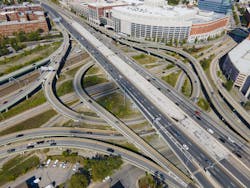Rhode Islands Wrong-Way Detection Systems Are Working
In 2015, the Rhode Island Department of Transportation (RIDOT) began a program to install wrong-way detection systems on off-ramps across the state’s highways.
The technology is designed to first alert the driver going the wrong way by triggering flashing electronic signs. A camera system also takes video of the vehicle and beams it back to RIDOT’s Traffic Management Center.
If the driver fails to turn around, a radar system further up the ramp detects the car that sounds an alarm in the center and sends out emails to officials. Workers in the center then notify state police to dispatch a cruiser.
Steven Pristawa, the state’s traffic safety engineer, said the 29 systems on the state’s 400 ramps detect wrong-way drivers about four to five times a month.
“These devices have helped,” Pristawa said. “When I see a wrong-way driver correcting – there is a good chance we just saved a life.”
RIDOT's data shows in the seven years before the equipment was installed, there were 91 wrong-way drivers, with 34 crashes and 13 fatalities.
May 2015 to November 2022, there has been one crash and zero fatalities at ramps equipped with the system. At ramps without the detection technology, there have been five crashes and one fatality during that same time period.
Pristawa said they targeted ramps where data showed drivers were getting on the wrong way more frequently. They also redesigned some ramps to make them less confusing.
“People have been driving the wrong way for years for whatever reason – if it’s confusion or impairment,” Pristawa said. “We have had over 600 occurrences of people going the wrong way (since the systems were installed) and to date we’ve only had one operator on one of those ramps continue and cause a crash that, thank God, wasn’t fatal.”
Pristawa said the system is often triggered by false calls, sometimes picking up traffic from the other side of the ramp. But that’s where the camera system comes into play so human operators in the control center can quickly assess the situation.
The technology cost about $25,000 to install in 2015, but the price has since spiked to $75,000. Pristawa said the state uses federal highway safety improvement program money to cover the cost.
------------------------------------------
Source: WPRI.com
